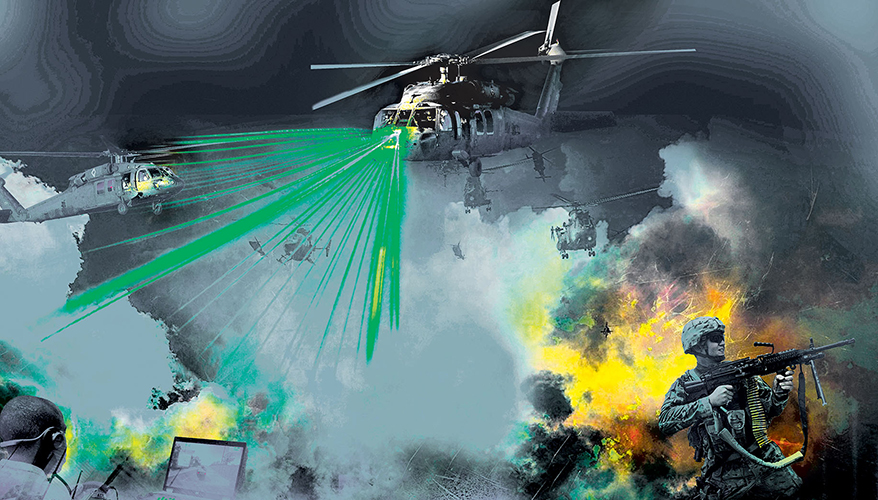El entorno de entrenamiento sintético, o STE, está diseñado para revolucionar el entrenamiento del Ejército al expandir rápidamente la simulación virtual y capacidades hasta el nivel batallón y compañía. El entorno de capacitación actual ha cumplido bien su propósito, pero ya no cumplirá con las nevas necesidades actuales ni con requisitos de capacitación futuros”.
Army leaders are asking program managers to shorten the development timeline of its new high-tech training system, the head of the program said Dec. 1.
The synthetic training environment, or STE, is designed to revolutionize Army training by rapidly expanding virtual and simulation capabilities down to the battalion and company level, said Maj. Gen. Maria Gervais, director of the synthetic training environment cross-functional team.
“Our current training environment really has served us well, but it no longer will meet our current needs or our future training requirements,” she said. “Quite frankly, just because of when they were developed and how they were developed, … in a stovepipe proprietary manner, there are just too many limitations.”
The initial focus of the STE — which is closely aligned with the Army’s soldier lethality modernization priority that is being spearheaded by Futures Command — was to examine foundational technologies, she said.
Now the cross-functional team has been directed to accelerate to what Gervais called its next big challenge, the live training environment, she noted during a panel discussion at the Interservice/Industry Training, Simulation and Education Conference. The event — the largest modeling and simulation symposium in the world — is being held virtually this year due to the COVID-19 pandemic. I/ITSEC is hosted by the National Training and Simulation Association, an affiliate of the National Defense Industrial Association.
“Senior leaders have directed that the modernization of our live training effort be accelerated because our projected initial operating capability of FY ’26 and our full operational capability in FY ’30 … was too long,” she said.
The CFT is being asked to speed up its timeline on this second increment of the STE because the service needs training systems that can support multi-domain operations and combined joint all-domain command and control, Gervais said.
Sustainment of the Army’s legacy platforms are quickly out costing their return on training. The service’s inability to replicate a large section of its combat capability negatively impacts readiness and new technology is readily available which can meet the collective training demands of multi-domain operations, she said.
The Army wants to revolutionize its live training and enjoy leap ahead improvements, she said. “We really want to get after a different way of delivering our live training environment.”
However, the challenge will be to realistically simulate multi-domain operations training through brigade combat teams at home station, to maneuver combat training centers, to deployed locations, she said.
“Our future live training needs to be a convergence of live and [a] synthetic family of systems that is affordable, uses emerging technology, is interactive with our legacy systems and is implemented before the divestment of our current systems,” she said.
This future environment will enable trainees in both live and the synthetic training environments to interact with each other, she said.
The Army’s vision will require industry’s help, she said.
In Gervais’ presentation slides, she noted that the live training environment will need near real-time, low latency, high bandwidth communication capability across a combat training center, even in degraded environments. There will also be a need for 3D terrain with accurate geo-spatial registration and near real-time updates to reflect changes to the environment.


